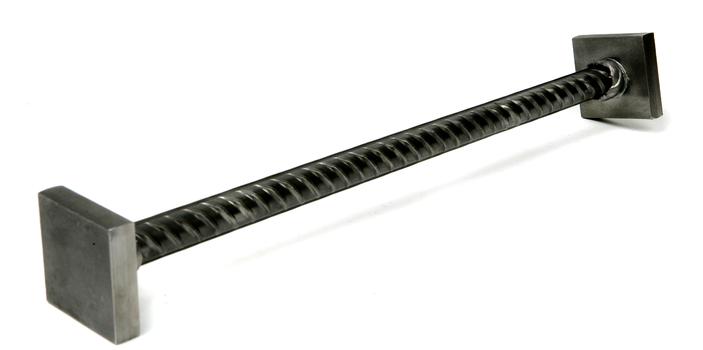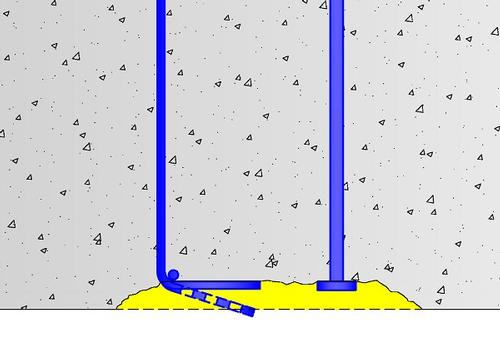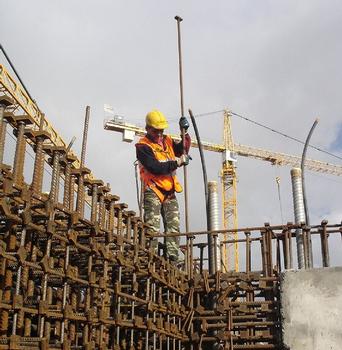HRC 100 & 200 Series T-headed reinforcement
T-headed rebar is common reinforcing steel with a small steel plate attached to one or both ends of the bar. The T-head works as anchoring device as an alternative to hooks or bends. The generic term for T-heads is "mechanical anchoring devices”. Their use is admitted by most design codes. The advantages of designing with headed reinforcement are acknowledged by engineers all over the world. An increasing number of contractors are choosing headed reinforcement because of the benefits of their use, especially the increased speed of installation.
HRC T-headed bars have some special characteristics which distinguish them from conventional reinforcement. HRC T-heads anchor the full actual tensile capacity of the rebar. Thus the reinforcement stays fully anchored beyond yielding up to bar break. That makes it possible to use the real stress- and strain capacity of the reinforcing steel, i.e. the full ductility of the rebar.
Characteristics of a HRC T-headed bars
1. Concentrated transfer of the full tensile capacity of the rebar
HRC 100 and 200 Series T-heads are designed to develop the tensile strength of the rebar without crushing normal strength concrete beneath the head. This results in the shortest possible anchorage length. The full capacity of the rebar is available from its end. The anchorage is not dependent on bond between reinforcing steel and surrounding concrete or a crossing bar. Anchorage of the full tensile capacity of the rebar prevents premature pullout failure.
2. Stiff anchorage of the rebar – minimizing slip
T-headed reinforcement provides a stiffer anchorage for rebar compared to anchorage with bends. Stiff anchorage does not mean stiffer reinforcement. The stiff anchorage by HRC T-heads reduces slip to a minimum, enabling the ductility of the reinforcing steel to be developed. Stiff anchorage of transverse reinforcement has a positive effect on the shear capacity and on the confining action.
Advantages for design and practical use
- Space saving anchorage (no development length, no hooks or bends)
- Safe anchorage, regardless of the bar diameter
- Safe anchorage even under loss of concrete cover
- Independent of bond between rebar and surrounding concrete, thus possible to use plain high-strength steel and beneficial in concrete with low bond properties (as lightweight aggregate concrete)
- Increased shear capacity
- Increased ductility of the construction
- Saves material (no extra lengths for anchorage)
- Easy handling and faster placing of the straight T-headed rebar (no hook or bend)
References
Relevant Websites
- About this
data sheet - Product-ID
43 - Published on:
18/10/2010 - Last updated on:
30/01/2016









